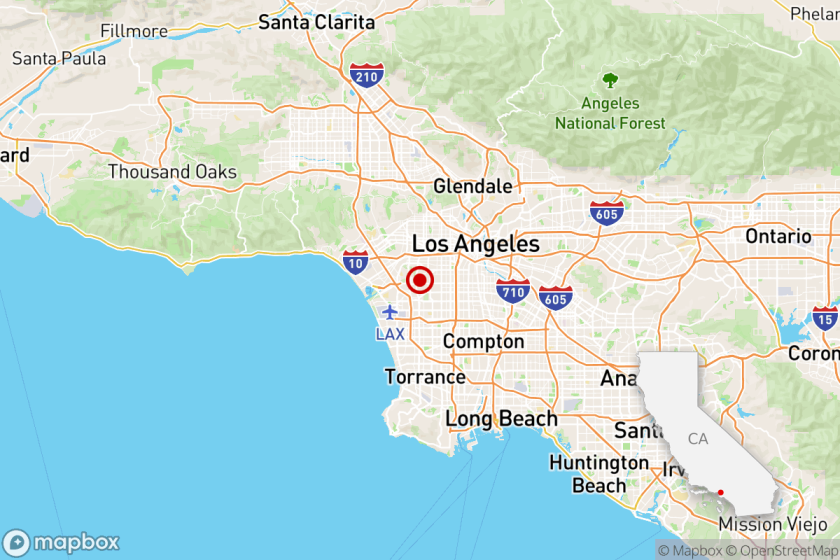Quit tossing fish guts into shark-filled waters, Long Beach lifeguards say

In mid-May, officials in Long Beach issued an advisory to beachgoers after several sharks were spotted in the shallow waters off the coast.
With a sizzling heat wave expected to drive uncounted Southern California residents to area beaches this weekend, lifeguards in Long Beach are urging anglers and film crews to stop attracting sharks with bloody chum.
The warning comes at a time of increased shark activity along the California coast. A seasonal glut of juvenile great white sharks has prompted the temporary closure of several beaches and resulted in the injury of at least two surfers.
Long Beach safety officials said they were alarmed recently to hear reports of film crews tossing fish guts near shore in order to draw the predators closer to their cameras.
“There is no shot worth somebody’s life — we are all responsible for maintaining public safety,” said firefighter-paramedic Jake Heflin, spokesman for the Long Beach Fire Department.
Lifeguards have recently spotted film crews as well as commercial and recreational fishing vessels throwing chum into the water to lure sharks near the Long Beach harbor, according to Heflin.
When lifeguards approached the groups, the activity often stopped, he said.
On one occasion recently, lifeguards intervened before a film crew with National Geographic could begin chumming, Heflin said. He said the crew was cooperative.
The recent chumming activity has been a significant public safety issue for the fire department, he said. As the department gears up for the busy summer beach season and prepares to launch its junior lifeguard program, Heflin said, officials are worried that swimmers could have an unpleasant encounter with a shark lured to the shore with bait.
“I know everybody wants the picture, but you put people’s lives at risk,” Heflin said. “You really have to question why you are doing that.”
Lifeguards have been looking for chumming activity along the shore, but enforcement has been difficult, he said. They must observe individuals tossing fish into the ocean to be able to issue a citation, for polluting the water, Heflin said.
“When we do see it, we are citing,” Heflin said.
Along with the citations, lifeguards have been conducting additional patrols of the water, he said. Signs posted along the water’s edge warn beachgoers of shark sightings.
Over the spring, the fire department received numerous reports of sharks in the waters off Peninsula Beach. Juvenile great white sharks, typically 5 to 6 feet long, have been regularly spotted near the shore.
Experts said the California coast is swarming with young sharks attracted to its safe ecosystem. Young sharks feed off a rich supply of sting rays, and pregnant female sharks prefer Southern California’s warmer water for gestation.
“It’s a nursery for young sharks,” said Chris Lowe, head of the Shark Lab at Cal State Long Beach.
But there is no way to tell how many sharks inhabit the waters off Southern California, he said.
More state and federal protections have allowed the predator population to thrive over the past 20 years.
But feeding the sharks could change their behavior, Lowe said.
Sharks could become complacent and rely on chum to survive. They could become aggressive and also linger in the waters for longer periods.
“In general, it’s a bad idea,” he said.
Twitter: VeronicaRochaLA
More to Read
Start your day right
Sign up for Essential California for news, features and recommendations from the L.A. Times and beyond in your inbox six days a week.
You may occasionally receive promotional content from the Los Angeles Times.






